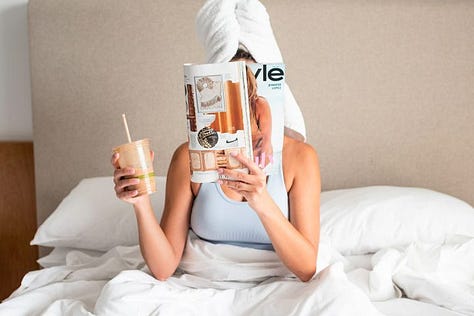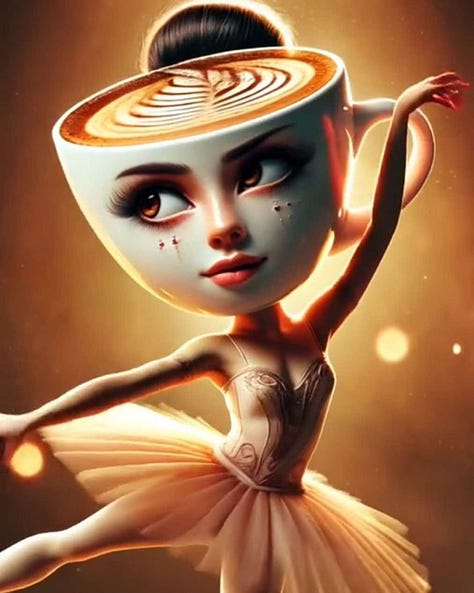This Week in Social: Radical Honesty, AI Brainrot, and the Wellness Wave
From Kylie Jenner’s candid surgery confessions to AI-fueled brainrot memes and a rising wave of holistic wellness content, here’s what’s trending this week.



1. Radical Honesty Is the New Brand Currency
We’re officially past the era of overly polished perfection. Audiences want the curtain pulled back, and brands and influencers are finally giving it to them.
Recent Examples:
Kylie Jenner’s Breast Implant Confession: Kylie recently responded to a fan comment on TikTok by sharing specifics about her breast augmentation, including the exact implant type and surgeon. She even expressed regret, suggesting others wait until after childbirth before getting surgery. The moment went viral not because it was shocking, but because it was honest.
Steve Madden’s Design Transparency: In a recent WWD interview, Steve Madden addressed the brand’s long-standing “designer-inspired” approach, bluntly stating they look to high fashion as a source of inspiration. It’s not exactly an apology, but it’s clear, self-aware, and direct.
Huda Kattan Reclaims Ownership: Huda Beauty’s founder recently announced she’s buying back remaining shares of her company. While it’s a business move, Huda paired it with a refreshingly honest message about realigning the brand with her values, something her audience deeply resonated with.
Why It Matters:
In a world trained to sniff out inauthenticity, transparency builds trust. Radical honesty is becoming one of the most effective ways to earn loyalty.
Brand Opportunities:
Acknowledge Imperfection: Use social to own your mistakes or missteps. A short, candid video explaining what happened and what’s changing builds more goodwill than a polished press release ever could.
Share the Journey, Not Just the Results: Consumers want to know how things are made, not just see the finished product. Take them behind the scenes on product development, rebrands, or updates, even if you're still in the middle of it.
Let Founders and Talent Speak Freely: When your founder or influencer partners speak with real emotion or opinion, don’t over-edit their voice. Giving them space to be honest makes your brand feel more human and trustworthy.
2. AI Brainrot Is Winning the Internet
You’ve probably seen them, chaotic and surreal TikToks with bizarre animation, odd characters, and commentary that makes no sense but keeps you watching. This content has been dubbed “brainrot” and it’s taking over social feeds.
The Rise of Brainrot Content: These AI-fueled meme videos, often created with tools like Genmo or Runway, are designed to overstimulate. It’s maximalism blended with absurdist humor, and Gen Z is all in.
From Niche Meme to Brand Playground: While most brainrot content lives in meme culture, it’s starting to show up in brand marketing through chaotic edits, audio overload, and intentionally unpolished formats that flip the script on traditional ad structure.
Why It Matters:
Even if you’re not jumping on the trend directly, understanding it helps keep your content relevant and tuned to emerging creative norms.
Brand Opportunities:
Play With Format: Try fast cuts, layered audio, or random visuals in your TikToks or Reels to give your content a fresh edge. A light touch of chaos can boost scroll-stopping power without throwing your brand off-course.
Create a Side Account to Experiment: Launch a sub-brand or alternate channel where you can test less polished, creator-style content. This lets you explore humor and cultural moments without confusing your main feed.
Partner With Meme Creators: Work with digital creators who are already fluent in this genre. Let them reinterpret your product or message in a format that feels native to meme culture.
3. Wellness Is the New Status Symbol
Wellness has moved from niche to norm. From mindfulness to clean living, holistic well-being is shaping how people spend, scroll, and share.
Recent Examples:
Mental Health and Mindfulness on Social: Creators like @therapyforblackgirls and @nedratawwab are making emotional well-being part of everyday content, offering self-help tips, calming affirmations, and permission to rest.
AI-Powered and App-Driven Wellness: Apps like Headspace, Wysa, and Woebot are offering personalized support, mindfulness tools, and even therapy bots that feel approachable and scalable.
Ingredient Transparency and Clean Beauty: Wellness-aligned beauty brands like BeautyCounter are doubling down on ingredient transparency and cleaner formulations, becoming lifestyle brands in the process.
Why It Matters:
Wellness content isn’t just about health products. It's a cultural lens reshaping what it means to live well, and people are paying attention.
Brand Opportunities:
Support Mental and Emotional Wellness: Share reminders to unplug, give your audience breathing room, or post small ways to reduce stress. Brands that show care for their audience’s well-being earn long-term trust.
Make Your Product Part of a Feel-Good Routine: Think of how your offering plays into someone’s day. Whether it’s lighting a candle, unboxing something fun, or taking a break, frame your product as a small moment of peace or joy.
Build Community Around Balance: Encourage followers to share their wellness rituals or self-care wins. UGC campaigns that revolve around feeling good can spark conversation and build connection, even if your product isn’t directly wellness-related.
Whether it’s radical truth-telling, meme chaos, or collective wellness, the most impactful content right now is content that taps into real emotion and relevance. Brands don’t need to be perfect; they just need to show up authentically and be part of the conversation.


